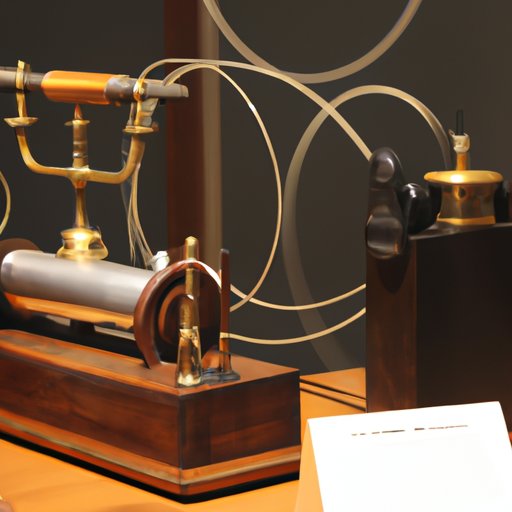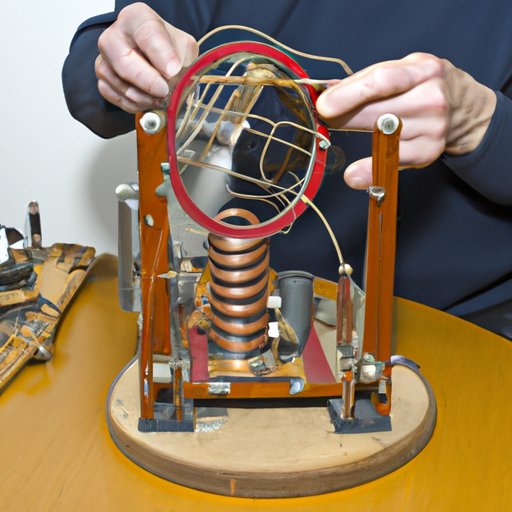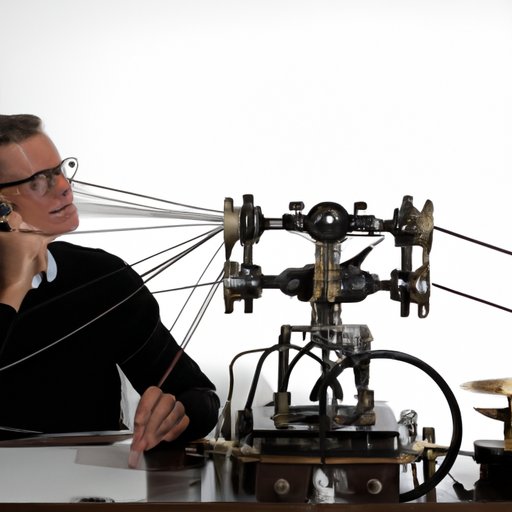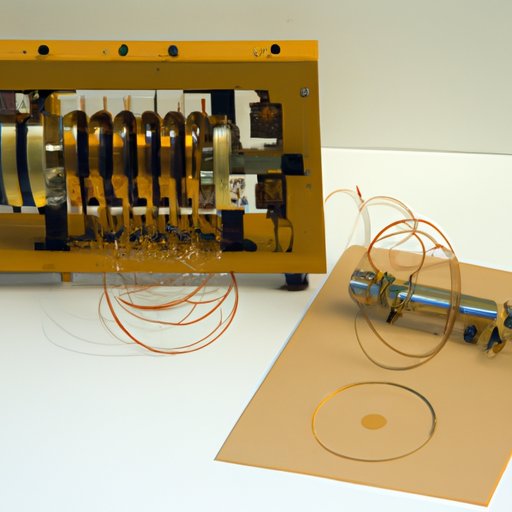Introduction
The telegraph has been one of the most important inventions since the invention of the telephone. It revolutionized communication by allowing people to send messages over long distances quickly and reliably. In this article, we will explore the history and technology of telegraphy, as well as its current applications. We will also provide a step-by-step guide to understanding how telegraphs work, including a detailed examination of their components and different types.

Exploring the History and Technology of Telegraphy
The earliest form of telegraphy dates back to 1794 when French engineer Claude Chappe developed a visual signaling device that used semaphore arms to transmit messages over long distances. This early form of telegraphy was limited in its range and speed, but it paved the way for more advanced forms of telegraphy. In 1837, American inventor Samuel Morse developed the first electrical telegraph, which used electricity to send messages through wires. His invention of the Morse code, a series of dots and dashes representing letters and numbers, made it possible to encode messages into electrical signals and transmit them over long distances.
The invention of the telegraph led to the development of telecommunication networks that allowed people to send messages from one location to another. The first commercial telegraph line opened in 1844 between Washington D.C. and Baltimore, Maryland. Over the next few decades, telegraph networks continued to expand, eventually reaching across the world. By the turn of the century, telegraphs had become a vital part of life, enabling people to communicate with each other instantly and reliably.
A Step-by-Step Guide to How Telegraphs Work
To understand how telegraphs work, it is important to first understand the basic principles of telegraphy. A telegraph is a device that uses electricity to send and receive messages over a distance. Messages are encoded in electrical signals and transmitted through wires or radio waves. These signals can then be received by a receiver, which decodes the signals and displays the message.
The process of sending and receiving messages using a telegraph is relatively simple. First, the sender encodes the message in electrical signals using the Morse code. The signals are then sent through wires or radio waves to the receiver. The receiver then decodes the signals and displays the message. This process can take just a few seconds or minutes depending on the distance between the sender and receiver.

Examining the Components of a Telegraph System
A telegraph system consists of several components that work together to send and receive messages. The main components of a telegraph system include the transmitter, receiver, power supply, antenna, and wires. The transmitter is responsible for encoding the message in electrical signals, while the receiver is responsible for decoding the signals and displaying the message. The power supply provides the necessary electricity to operate the system, while the antenna is used to transmit the signals. Finally, the wires are used to connect the components of the system.
Each component of a telegraph system plays an important role in the transmission of messages. The transmitter encodes the message in electrical signals that can be transmitted over long distances. The receiver then decodes the signals and displays the message. The power supply provides the necessary electricity to operate the system, while the antenna transmits the signals. Finally, the wires are used to connect the components of the system.
Understanding Different Types of Telegraphs
There are several different types of telegraphs, each of which has its own unique characteristics and uses. Acoustic telegraphs use sound waves to transmit messages, while radio telegraphs use radio waves. Optical telegraphs use light signals, such as flashes of light, to send messages. Each type of telegraph has its own advantages and disadvantages, and can be used for different purposes.
Acoustic telegraphs are the simplest type of telegraph. They use sound waves to send and receive messages over short distances. Radio telegraphs use radio waves to transmit messages over longer distances. Optical telegraphs use flashes of light to send messages, and can be used to send messages over very long distances. Each type of telegraph has its own advantages and disadvantages, and can be used for different purposes.

Investigating How Telegraphs Have Evolved Over Time
Since their invention, telegraphs have undergone a number of advances and changes. Modern telegraphs now use digital signals instead of analog signals, making them more reliable and efficient. In addition, modern telegraphs can now transmit data at much higher speeds than before. Finally, modern telegraphs are now used in a variety of applications, such as in military communications, internet connectivity, and even in medical applications.
The advances in telegraph technology have made it possible to send and receive messages almost instantaneously. Today, telegraphs are still used in a variety of applications, including military communications, internet connectivity, and medical applications. As technology continues to advance, telegraphs are likely to continue to evolve and become even more useful in the future.
Conclusion
The telegraph has been an important invention since its invention in the 19th century. In this article, we explored the history and technology of telegraphy, as well as how it works. We also examined the components of a telegraph system, discussed the different types of telegraphs, and investigated how telegraphs have evolved over time. Understanding telegraphy is essential to understanding the development of modern communication technologies, and its importance should not be overlooked.
(Note: Is this article not meeting your expectations? Do you have knowledge or insights to share? Unlock new opportunities and expand your reach by joining our authors team. Click Registration to join us and share your expertise with our readers.)
